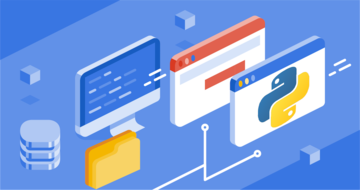Opportunities

There were many great opportunities afforded to me at Auvik. In particular, two opportunities highlighted my work term. The first was the chance to learn by taking an active role in revamping the current application deployment system. The timing of my hire as a co-op student was not a coincidence; my manager was under pressure to rewrite his legacy code fast. This code drove many crucial scripts. These scripts generated customer reports for the marketing team and system health checks for the engineering team and needed to run on a regular basis. At the time, my manager developed his own method to automate the scripts: Bash scripts on a jump server. It was not a clean solution though, and it was beginning to show its age. Some were failing at runtime, others had wrong output, and some didn't run at all. With the engineering team now using Kubernetes to automate deployment, there was no choice but to port over the scripts – an impossible task in their current state.
The learning curve was immense; in only a few days of training, I needed to learn Python, the APIs of Salesforce and other SaaS tools, and the tools used in Agile. It was hard, but not impossible. I coordinated with my manager, starting with small objectives and defining ways to achieve them; to refactor, learn how the scripts work; to debug, use small test cases; to write pythonic code, research best Python practices. In two short weeks, I not only learned how to rewrite his code to increase efficiency and fix bugs but also learned proper Python by mirroring his functional programming practices. I moved on to write test modules via PyTest, factoring in all the edge cases that could arise in production. Finally, to enable the scripts to be deployed as recurring pods via Kubernetes, I refactored the scripts to write results to MongoDB and Amazon EC2 instead of the local file system. This entire process took a month with many pitfalls along the way, but everything started to come together in the end. Not only are the scripts much more robust but also self-contained; they are much easier to diagnose through built-in logging and monitoring. I am very thankful for the trust my manager placed in me. I was able to learn at an accelerated pace and apply my skills to a real-world problem.

The second was the chance to have full design control over their engineering tools web application. Before the revamp, the script results would be displayed hourly on the jump server as HTML. With the jump server now being taken down, my manager entrusted me with the task of creating an entirely new web application on their web server to replace it. I could choose any frameworks I wanted, design the UI, and write its functionality from scratch. The only requirement was to retain the original functionality of the jump server and improve upon it. Considering I've never created a web application in Python, this was an opportunity I could not pass.
I chose Flask to build the application, Jinja2 to template HTML, and Bootstrap and CSS to create the UI. Though I was educated on the fundamentals of web development in lectures, I realized that there is so much more to consider when developing a web application. I learned about core operations including the ability to template output, store sessions and route URLs, and how powerful these features are when put together. I discovered the pros and cons of caching, how it affected my application and how I can use it to my advantage. Over time I weaved these ideas into the web application, continually rewriting and refining my code. As a result, I created a web application that is extendable and updates in real-time. I can say that this is the culmination of my work at Auvik, and I am so thankful for this opportunity from my manager. I am much more capable as a web developer now.
You can find screenshots of the web application here.